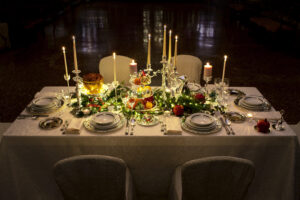
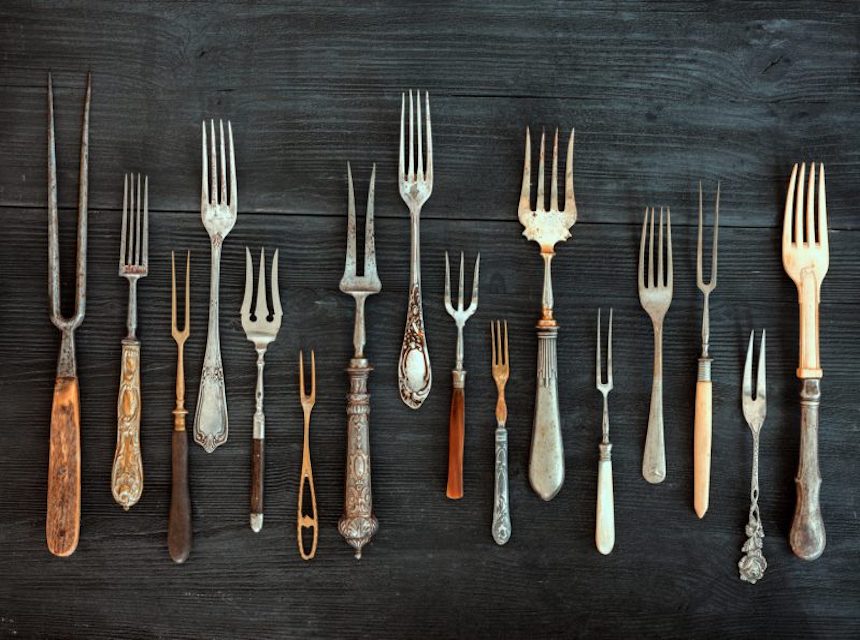
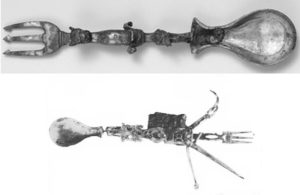
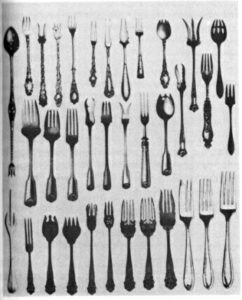
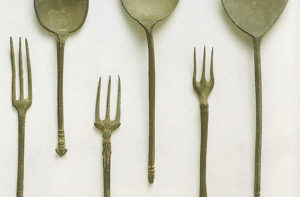
The fork has become the universal symbol of the table and the pleasures of the throat, the indispensable tool of our daily eating habits. But this has not always been the case, the fork is a fairly recent invention that has made it much harder than the knife and spoon to conquer a place at the table.
For millennia, men ate by bringing food to the mouth with their hands, the use of the fork was unknown in ancient times, the Greeks and Romans rarely used knives and spoons. There were two-pointed forks but they were exclusive to the canteen staff who skewered the meat to be cooked. On the other hand, if the cutlery was scarce, the rules of good manners such as washing hands and inventions such as thimbles so as not to burn the fingers and the crumb to clean the mouth abounded.
Only in the late imperial era, a small two-pointed tool appear that was used to pierce and bring sticky foods to the mouth, the use was limited but the shape began to be that of a real fork. With the fall of the Roman Empire, however, the use of this instrument and the “ligula” disappeared, a lanceolate cutlery widely used in the East.
The first real fork is witnessed in Italy in Venice when Doge Orseolo II married a Byzantine princess, she sent trunks full of pottery, jewelry and precious fabrics including a small gold fork for two to beautiful Venice. prongs that the neo-dogaressa handled with ease to eat. The religious, however, immediately thundered against the use of cutlery because they saw it as the instrument of the devil given its shape and thus prohibited its use.
With the flourishing of the Renaissance we witness the renewal of all the arts, even that of sitting at the table and the fork makes its entry into the mise en place of the time.
In France, the first king to feast on a knife and fork was Henry III of Valois, son of the Italian Caterina de Medici who can be considered the real responsible for introducing cutlery to the court even if this new custom did not enthuse anyone and most some people kept using their hands.
In England the use of the fork remains unknown until the 17th century and towards the end of the 18th century it was welcomed on tables throughout Europe by nobles, bourgeois and commoners.